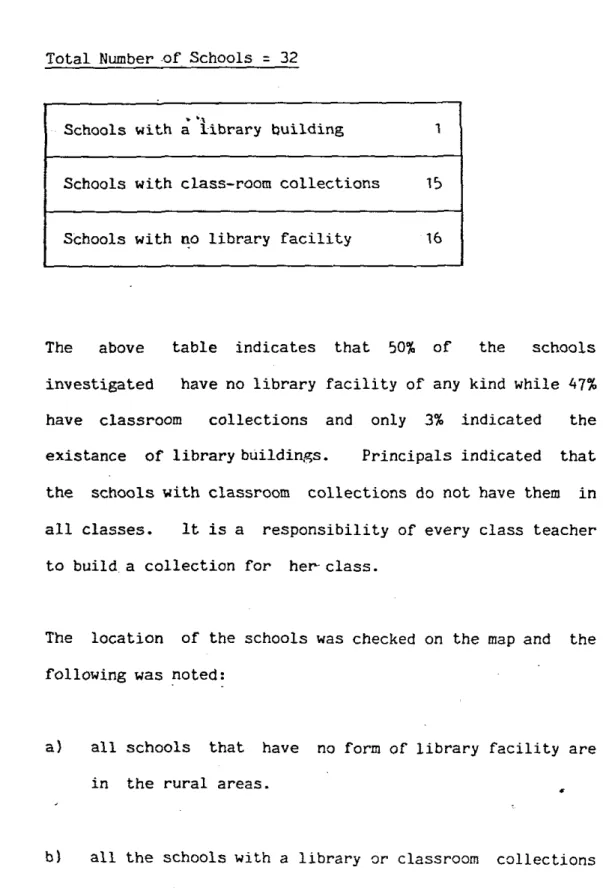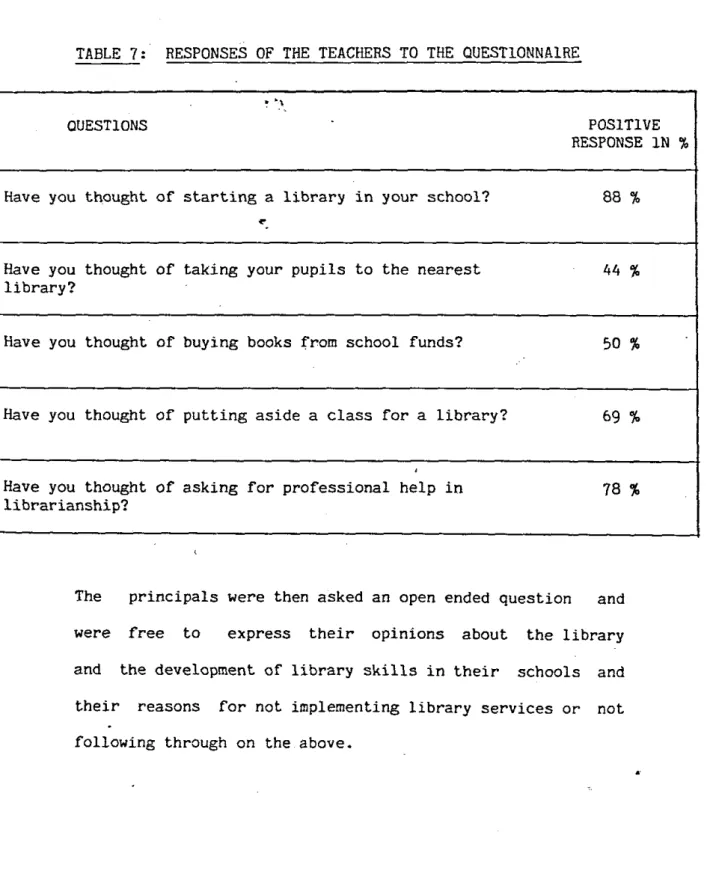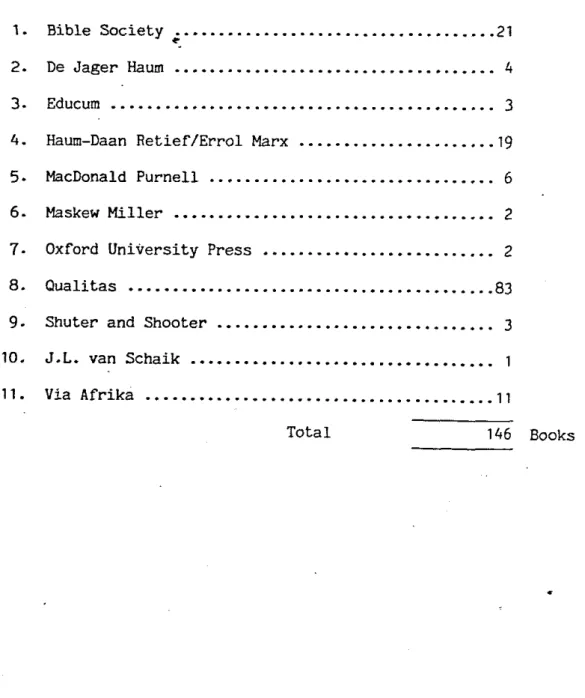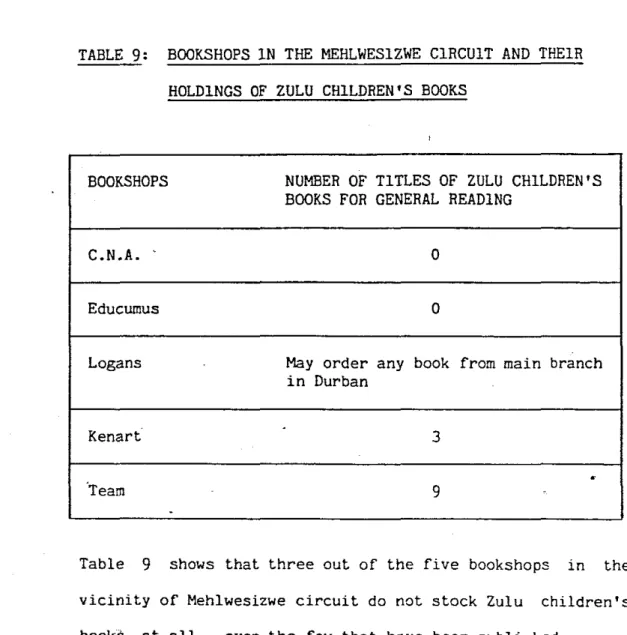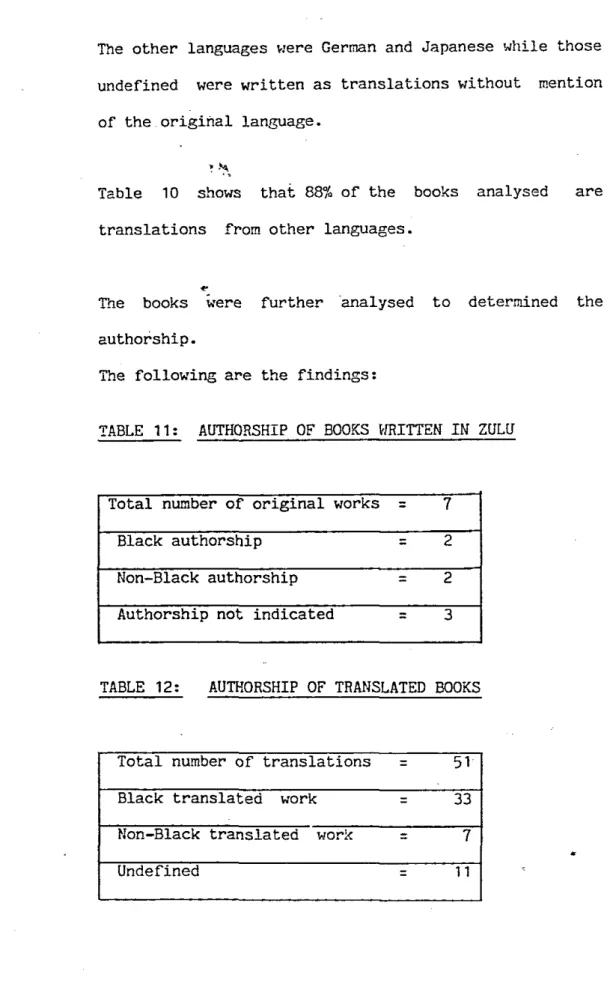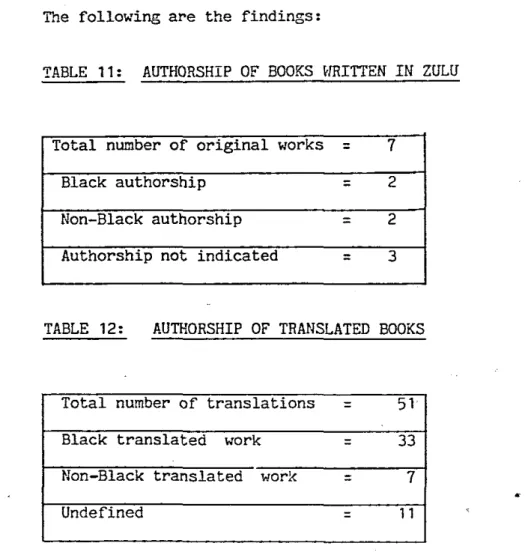My mother, who through hard work made me achieve so much, and my father, who always reminded me of the value of education. To my husband, Albert Nhlanhla, for his constructive criticism~ and constant encouragement, and to our children, Nonhlanhla, Mlungisi and Xolile, for the mora~_support they have given me. Primary school children in Mehlwesizwe district who are learning to read for the first time do not have enough reading material in the Zulu language.
AN INVESTIGATION INTO THE AVAILABILITY OF ZULU CHILDREN'S LITERATURE FOR LOWER PRIMARY SCHOOL
A BRIEF INVESTIGATION OF THE SUITABILITY OF THE AVAILABLE ZOLEK CHILDREN'S BOOKS FOR PRIMARY PRIMARY SCHOOL STUDENTS.
A BRIEF INVESTIGATION INTO THE SUITABILITY OF THE AVAILABLE ZULU CHILDREN'S BOOKS FOR LOWER PRIMARY SCHOOL PUPILS
This is consistent with the overall state of deprivation of South Africa's black population. It is interesting to note that while there is no scarcity in English and African children's literature, a racial element has been identified in some African children's books, which element "seemed not to exist in Zulu children's books translated from Afrikaans." This study presents scientific evidence of the status of children's literature for blacks in South Africa.
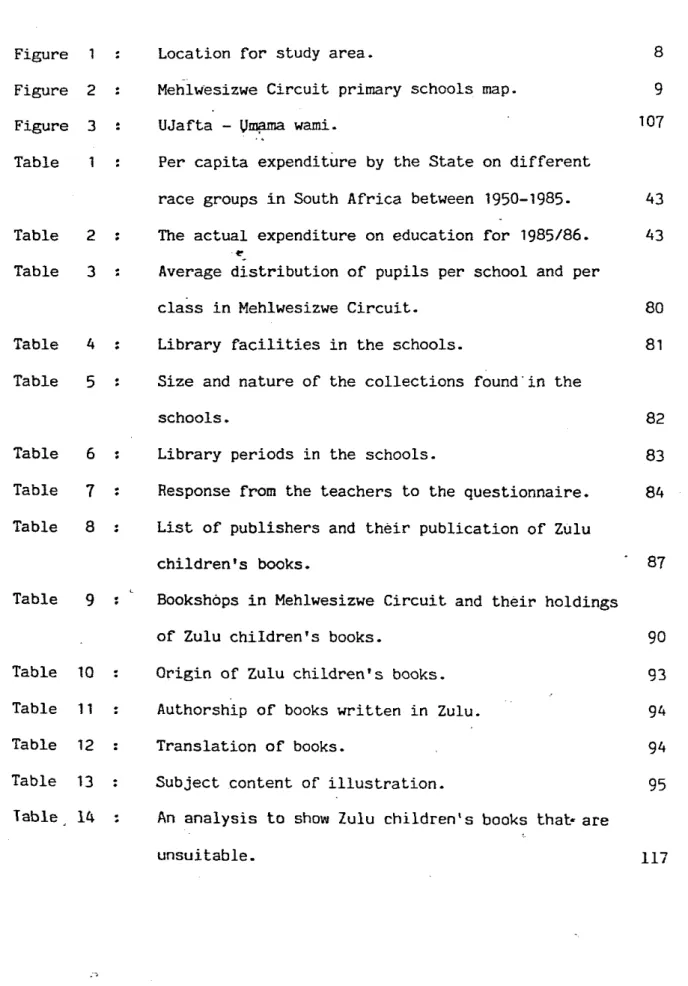
GENERAL ORIENTATION TO THE STUDY
Zulu children's literature therefore refers to books for children of this age group written in the Zulu language. Mehlwesizwe Circle is one of the twenty-five circles under the KwaZulu Department of Education and Culture. The second objective is to determine whether the available literature is suitable for cultivating and promoting the interest in reading in children.
PRINCIPLES INVOLVED IN THE CULTIVATION AND PROMOTION OF READING INTEREST AS A LIFE-LONG HABIT
It was mentioned in the introduction that if we proceed to the end of the first reading process, ie. control of education for blacks by the Nationalist government was established on the basis of a Christian national educational philosophy. The report of the Interdepartmental Commission of Inquiry on Library Services for Non-Whites contains a direct recommendation for library services in the homelands.
In the light of the above, the following discussion on library services in Mehlwesizwe District will be considered. Below are the tools I have identified from various sources and selected as being of particular importance in the case of the black child. There should be compatibility between the book, language, age, cultural background and educational level of the child.
Internal influences relate to the child's age, intelligence, and level of education. Intelligence exerts a discernible influence on a child's reading ability. There must therefore always be a match between the content of the book and the age and level of education of the child. Children expect the sentence structure they read to match the structure of the language they already know.
In the two examples above, the underlined sentences show an incorrect use of the Zulu language. Not every child will like the same picture as another child of the same age. Book education is a part of reading guidance in which a child is trained in the correct use of the book and everything related to the book.
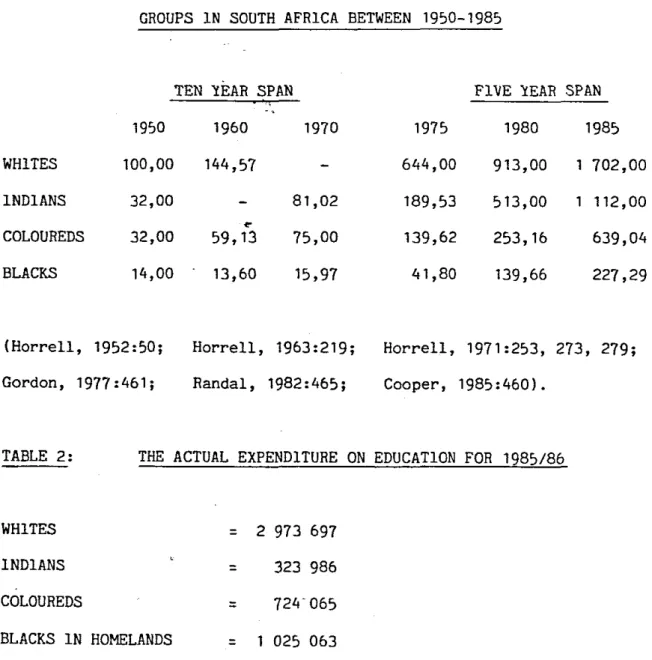
AN INVESTIGATION INTO THE AVAILABILITY OF ZULU CHILDREN'S BOOKS FOR LOWER PRIMARY SCHOOL PUPILS OF MEHLWESIZWE CIRCUIT
Interviews were conducted with managers of four bookstores and the librarian of the Empangeni Public Library. After establishing that all of these services are open to all races, the author established the number of children's books in Zulu normally found in each of the above sources. The table above shows that 50% of the schools surveyed do not have any library facilities, while 47% do. have classroom collections and only 3% indicate that library buildings exist.
The location of the schools was checked on the map and the following was noted: .. a) all schools that do not have any form of library facility are. The following table shows the size and nature of the collections found in the schools. The numbers given are the total of the books for the whole school and are divided among the classrooms.
One of the schools that indicated that it had some general books said that the teachers make block IORs from the University of Zululand Children's Library. A question was asked to ascertain the attitude and level of enthusiasm of the school principal towards the library. 50% of all respondents expressed an intention and willingness to expand the publication of Zulu children's books for general reading.
The following table summarizes the number of Zulu children's books published by each of the eleven publishers to date.
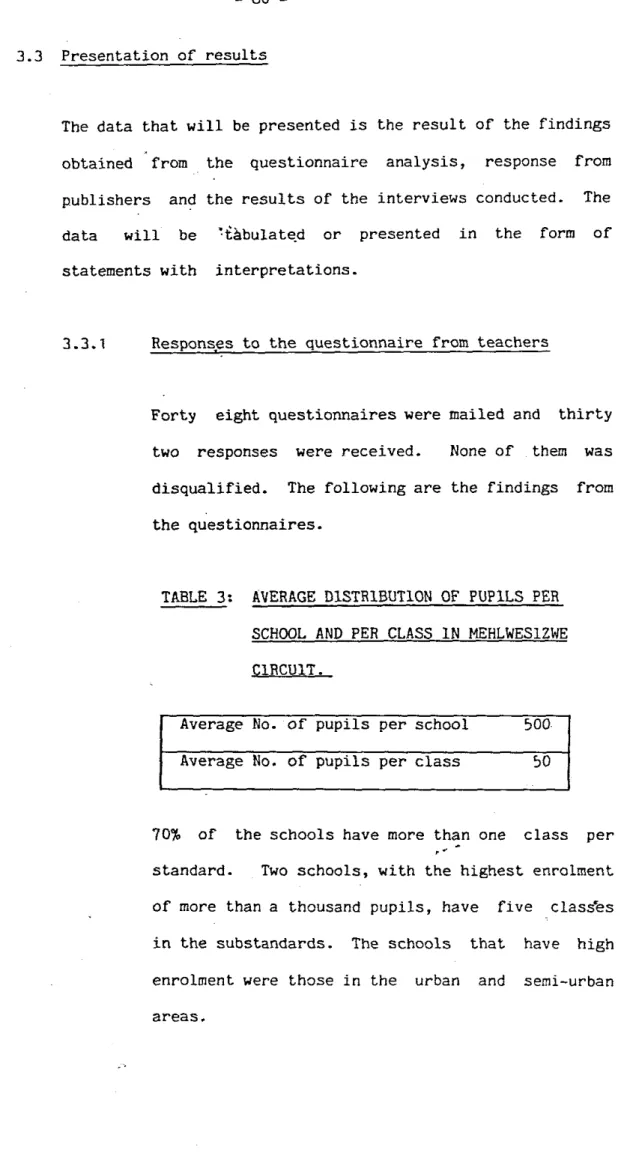
A BRIEF INVESTIGATION , INTO THE SUITABILITY OF ZULU CHILDREN'S BOOKS FOR LOWER PRIMARY SCHOOL PUPILS
The author has attempted to find and analyze every Zulu children's book available in South Africa. Out of a total of 146 titles from various South African publishers, 58 books were found and all were read. Other languages were German and Japanese, while those undefined were written as translations without mentioning the original language.
Tables 11 and 12 show that 60% of the books included a black author or translator, while 16% were written by whites. The above table shows that of the total number of books analyzed by the author, 55% have illustrations with only white characters, 16% only black, 3% both black and ~it and 26%. The analysis will be based on whether the dictionary has been checked, has lanGua6e.
In ~the analysis, the author will select one or more sections from each book, with page reference to show words or sentences that exhibit some form of disability. The following example books show poor vocabulary control, and as a result confusion can be created while a child is reading which can interfere with his reading interest.
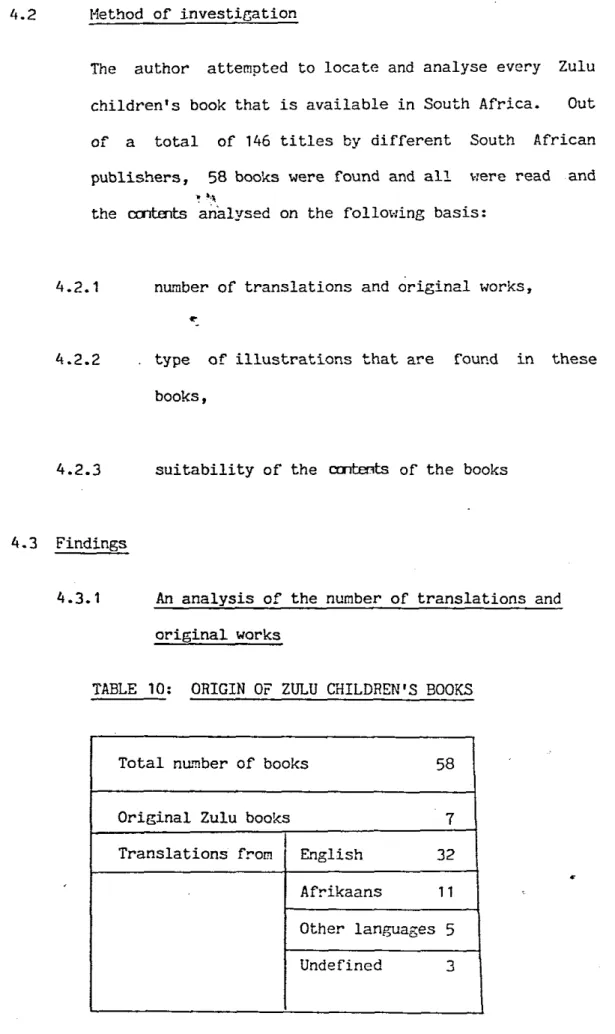
1m pu ng ushe yagij i rna yaya entombini, yaluma
Intombazane sengathi ifile
The author refers to the same person as intombi and intombazane, two different developmental stages in the female. In the book UNyamazane noFudu by Liguori-Reynold~. Rosalie there are few spelling errors, e.g. on page ten, ukeqomisa should be uukomisa. on page twelve umsondo should be umsindo on page nine uqatshuzwe should be uqatshulwe on page twenty-nine bathandiwe should be bathandwe. Some words have been translated into Zulu, such as Senatha and Bhetsi, while others have been left untranslated, for example: kansaroo and gerbil, without explaining their meaning.
Amanye amagama ezindawo ahunyushiwe, kanti amanye ashiywe esesimweni sawo sokuqala. amagama adwetshelwe endimeni elandelayo ayizibonelo zalokhu kuntuleka kokufana. UPatricia Bakenisi wayethanda izintaba eziphakeme namahlathi athule. Lokhu kukhombisa ukungalawuleki kahle kwamagama esiZulu. labo abayizinyoni ezimbi nje makube abanye, ekhasini lesithathu uNgJekazi wawabuka wawadla, kwakufanele azindle. ekhasini lesishagalolunye inhliziyo kaNgwekazi yayishaya ngamandla. ekhasini leshumi nesikhombisa, ake ngibase umlilo sihambe. f) Iningi labadayisi laliqhamuka enhlokodolobha iRangoon. Ukuntuleka kokulawula isilulumagama kutholakala emagameni adwetshelwe. esiqeshini esingenhla esithathwe Umbese ka Shan wenhlanhla ka Merril~Jean. kuyilapho amagama adwetshelwe ehlala esipelingini sawo sokuqala, amagama adwetshelwe ahunyushiwe. phazamisa ukufunda ezinganeni. g).
Children should be taught the correct spelling of names and words without causing confusion and uncertainty. h). The following example is from a scfence book for children entitled ~~azi umzimba wakho translated by Khathi>N.P. in a chapter titled Upahla lommizumab on page four:. Poor vocabulary control is also found in the following~. bock, Usosi, imvubu, utsiya angana translated by Msimang, CT.
The names of the characters are translated ~~ follows:. j) While in another book titled Ungibhonabhonephi by abafo bakwa Grim, the people's names were not translated but left as Conrad, Harry, John etc.
This is due to the misuse of the word ngenzeke, which means 'it cannot happen', but according to the text, the author meant 'it can happen', which should have happened. In the following pages of this book, the author rightly states that umh1aba is onyakazayo and not umhlabathi as indicated above. In the sentence above, the idiomatic expression as used does not exist in the Zulu language and the concordance is wrong. el Ingungumbane nentenesha by abafo bakwa Grim.
The sentence on the fifth page reads: Intenesha, kekei kwayo ngolaka yakhala. fl The use of examples is popular in children's books because it brings excitement and a lot of imagination to children. Unfortunately, some translators use similes and metaphors that do not exist in the Zulu language. in UJafta - Ubaba wami Lewin, Hugh the sentence on the other side reads: Ubaba wami kwasho UJafta mude khu unaman&la comuthi. The use of imagery is incorrect, so this sentence does not make sense to a Zulu-speaking child. g).
Uthenga ubhontshisi ongagcwala scndlc >", ,. ukuphekela izitshalo athengele indoda yakhe ipeya elivuthiwe limnandi hhayi nje elimnandi, lehla ngokunambitheka. h) Kodwa wayezwile ngokunyamalala kwe Indodana yenkosi kanye nomvuzo wenkosi okuyingxenye yobukhosi.Lesi siqephu esingenhla sithathwe encwadini enesihloko esithi, Ine;xenye yombuso kaMcGovern, Ann.ikhombisa ukusetshenziswa okungalungile kwesisho senkulumo esingatholakali olimini lwesiZulu.
Isilwane sasizimisele ukuyihudulela a edeni intombazane bese sibiza amazinyane csox , "
Kunekhambi elilodwa eliyinhloko elingenza imvubu ikhwehlele kakhulu kangangokuthi wonke amanzi aphuma emlonyeni wayo. l ) 'Amanzi afika edolweni, ngakho-ke ayezofika uma ingekho ingozi, ilanga labuye lathi: "Yebo," abaningi babo bangena. Lapho amanzi ephezu kwekhanda lendoda, amanzi athi elangeni, "Ingabe usafuna ukuba abantu bami abaningi beze?" wathi elangeni: "Nisafuna ukuthi kufike abantu bami abaningi na?". Lapho amanzi esephezulu ngqo, ekhanda lendoda, yathi elangeni: "Ingabe usafuna abantu bami abaningi beze?". m).
Kwakumi ihote1a elincane, iBellevue ibizo lalo
Emafasite1eni linamabhokisi aluhlaza ezimbali ezinhle
Lesi siqephu esingenhla sisekhasini leshumi nantathu lencwadi enesihloko esithi Yingani ilang. nenyanga ihlala esibhakabhakeni uDayrell, Eliphistone. Wonke amagama adwetshelwe kufanele alungiswe kanje: ezimbalini kufanele kube nezimbali okumele ziyeke shduld kube ukumisa lowo oshayayo angase ashaye. futhi umusho wokugcina kufanele ufunde:
Ekuseni ngelinye ilanga uKiboko
EDUCUM
MASKEW MILLER
OXFORD UNIVERSITY PRESS UJack nabaphangi
QUALITAS
